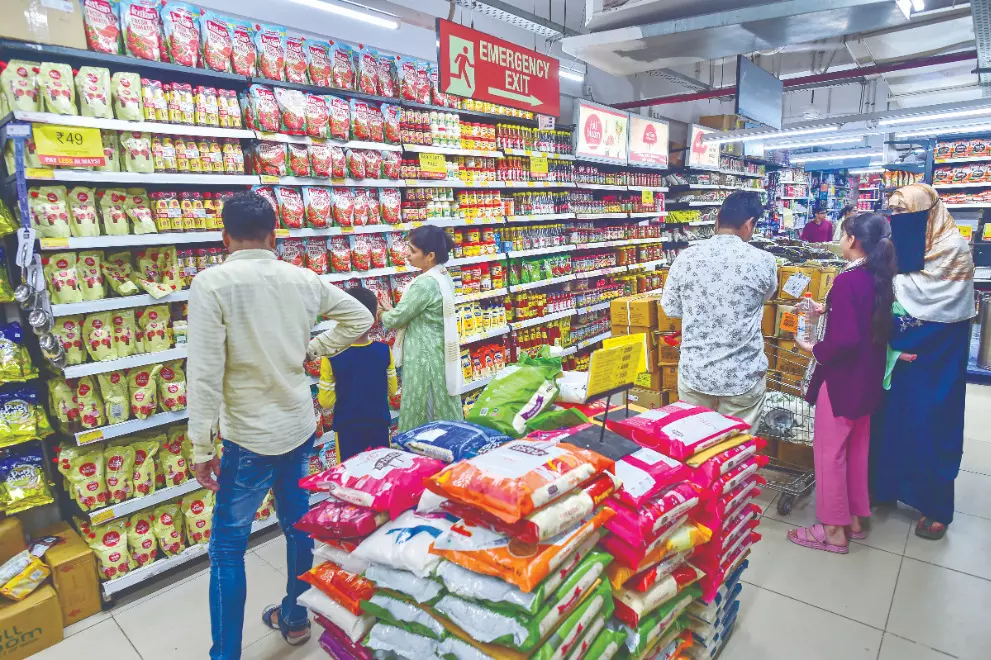Retail inflation eases to over 8-year low of 1.54%

New Delhi: Retail inflation cooled to an over eight-year low of 1.54 per cent in September, slipping well below the Reserve Bank of India’s (RBI) target range as food prices continued to decline, according to data released by the National Statistical Office (NSO) on Monday. The fall was driven mainly by lower prices of vegetables, fruits and pulses.
The latest figure compares with 2.07 per cent in August and 5.49 per cent in September 2024, marking the lowest year-on-year inflation since June 2017, when it had stood at 1.46 per cent. It is also the second time in 2025 that consumer inflation has dropped below 2 per cent.
“There is a decrease of 53 basis points in headline inflation of September 2025 compared to August 2025. It is the lowest year-on-year inflation after June 2017,” the NSO said. The government requires the RBI to maintain consumer price index (CPI)-based inflation at 4 per cent, with a tolerance band of 2 percentage points on either side.
The food inflation rate registered a significant contraction, falling to (-) 2.28 per cent in September from (-) 0.64 per cent in August, a sharp reversal from 9.24 per cent a year ago. The NSO attributed this decline to a “favourable base effect” and a drop in inflation across several key categories — vegetables, oils and fats, fruits, pulses, cereals, eggs, and fuel.
Inflation patterns also varied across regions. Rural inflation stood at 1.07 per cent, while urban areas recorded 2.04 per cent. Among states, Kerala experienced the highest inflation at 9.05 per cent, while Uttar Pradesh recorded the lowest at (-) 0.61 per cent.
According to the NSO, inflation in ‘fuel and light’ eased to 1.98 per cent in September from 2.32 per cent in August, while ‘transport and communication’ inflation fell to 1.82 per cent.
In its October monetary policy, the RBI revised its inflation projection for 2025–26 to 2.6 per cent, down from the 3.1 per cent forecast in August, citing benign food prices and the impact of GST rate rationalisation. The central bank said that “healthy progress of the south-west monsoon, higher kharif sowing, adequate reservoir levels and comfortable foodgrain stocks” were expected to keep food prices stable.
Earlier this month, the RBI kept its key policy rates unchanged, opting to assess the effects of prior rate cuts, recent tax changes and evolving global conditions.
The NSO said it collects price data from 1,181 villages and 1,114 urban markets across all states and Union Territories to compile the CPI figures.



